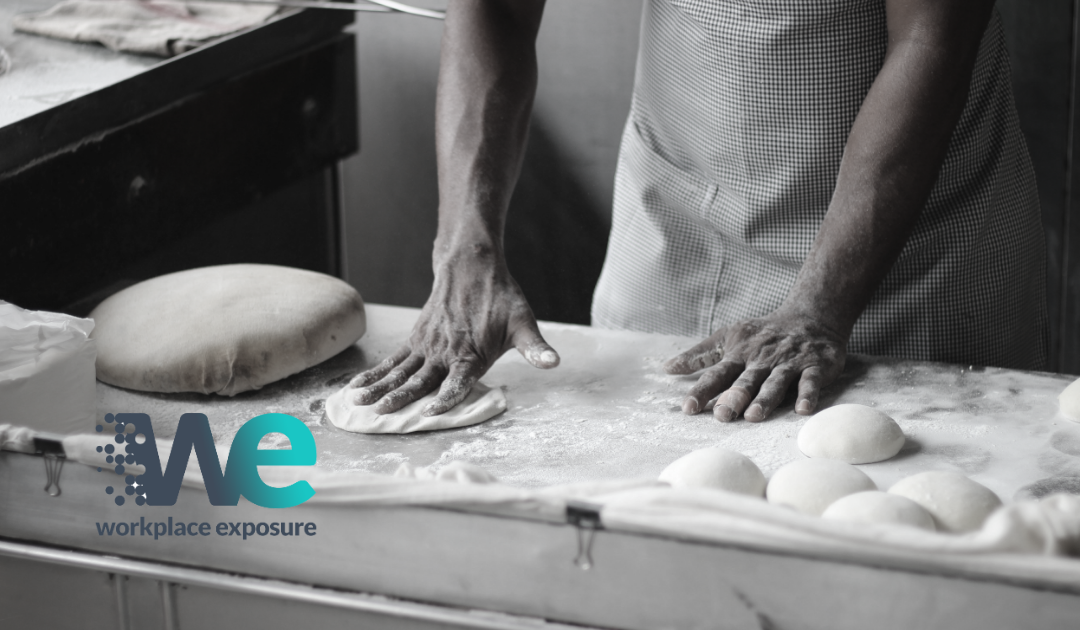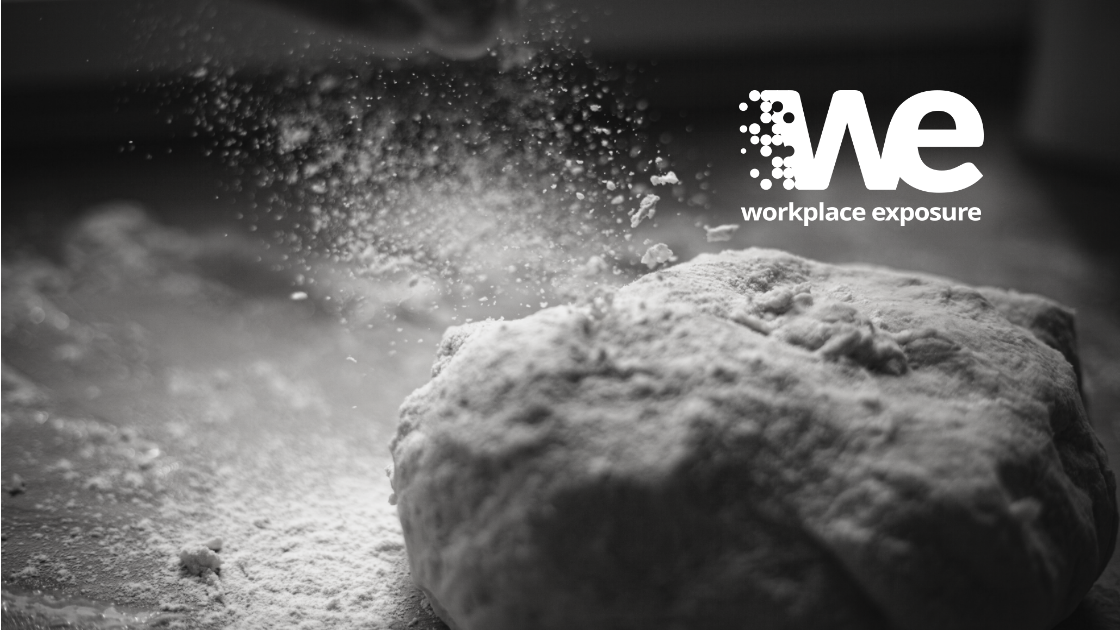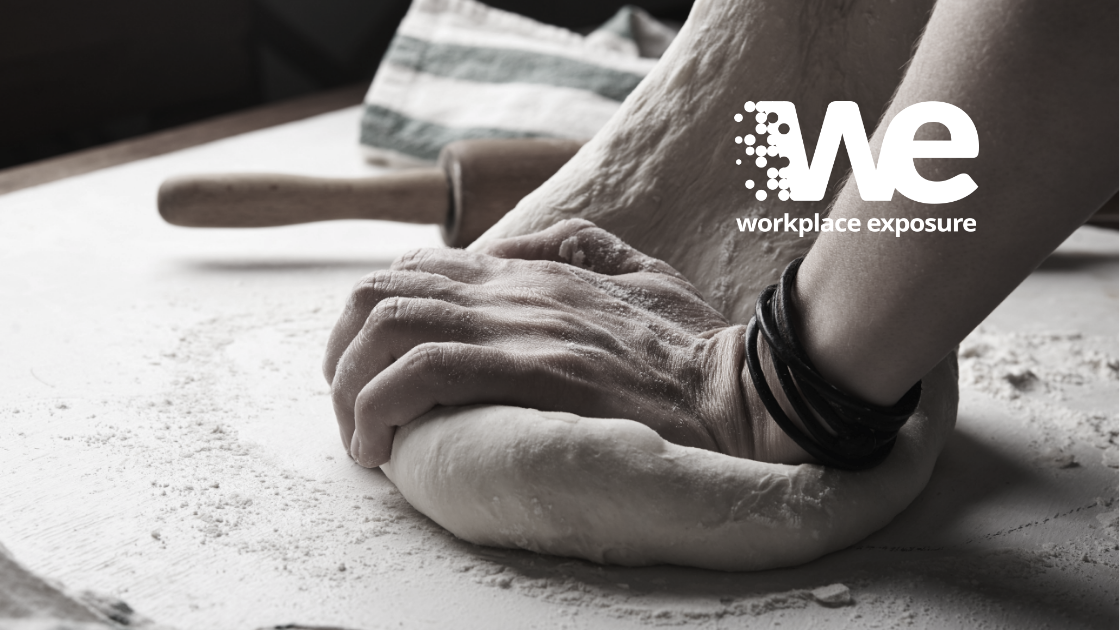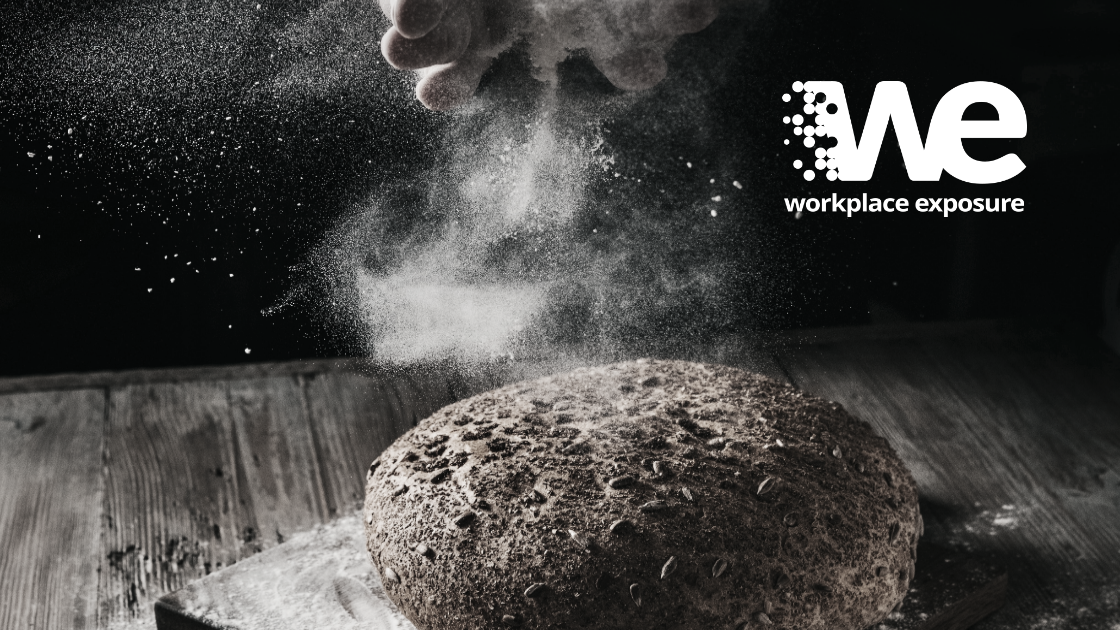Health and Safety in Bakeries
The smell of fresh bread in the morning evokes feelings of wellbeing and happy memories, so you would be forgiven for not immediately associating a bakery as a hazardous place to work. However, bakeries can be full of potential risks to employees.
Often, a baker will produce over 800 loaves a day and all by hand. In some places, a timer is used to keep check of the speed at which the dough is produced. This can cause workers stress, repetitive strain injuries and other health issues.
The Health and Safety Executive (HSE) reported that bakers and flour confectioners are 83.1 times more likely to suffer from work related asthma.
As with any industrial workplace, there are the usual hazards such as slips, trips and falls, ergonomic injuries, eye strain, stress, manual handling and fire safety. However, working in a bakery brings with it a unique set of additional challenges, risks and hazards.
In this article, we break down the top hazards of working in a bakery that employers and employees should be aware of.
Controlling Allergies in Bakeries
Bakers may suffer from allergies unique to their workplace, which might not otherwise be known if you were working in another environment, such as an office. For example, an employee might be allergic to particular substances used in baking processes that could cause problems with skin, eyes or respiration.
Flour dust is a hazardous substance and can cause tightness of the chest, breathlessness, wheezing and bronchitis. Asthma can develop if an employee becomes sensitised. Skin complaints, such as occupational dermatitis, can develop due to contact with irritants. This can lead to redness, itching or even blistering of the skin.
Exposure to allergens such as flour can lead to asthma or occupational rhinitis (OR). OR is a condition which inflames the nasal passage causing congestion and problems with airflow. Similarly, eye irritation can occur such as conjunctivitis, again caused by exposure to flour or other airborne irritants. It results in painful and/or watering eyes.
Flour Dust Air Monitoring
COSHH Regulations place legal requirements for employers to control the risk of the exposure to harmful substances within the workplace.
COSHH Air Monitoring samples the air to measure the exposure levels within the designated area. In bakeries, levels of air-borne substances such as flour dust are monitored and analysed.
The long-term exposure limit for substances such as flour dust is 10mg/m³ averaging over 8 hours, while the short-term exposure limit is 30mg/m³ over 15 minutes. Due to flour dust being an asthmagen, it is recommended that the exposure should be reduced far below the Workplace Exposure Limit.
Experienced occupational hygienists conduct such tests, asking relevant questions and placing sampling equipment on workers for the duration of their shift. From here, a report is produced which highlights the focus areas to increase workplace safety.
When good practices are put into place, HSE state that less than 2mg/m³ is achievable over an 8-hour period. However, it is imperative to carry out health surveillance, helping to further protect the health of employees.
The Risk of Occupational Dermatitis
Skin disease such as dermatitis or eczema can develop over time in bakery staff. This is due to the frequent contact with flour, spices, dough, cleaning products, and other potential irritants.
Washing the hands is the best methods of stopping the spread of viruses and bacteria, requiring bakers to wash their hands more often than in other work environments. Doing so on a frequent basis can damage the protective layer of skin on the hands, which can lead to skin complaints.
Manual Handling in Bakeries
Lifting, carrying, or pushing and pulling heavy bags of flour, roll cages, mixing bowls or trays are all daily tasks for bakers. However, if performed incorrectly, they can cause back pain or musculoskeletal injuries.
Manual handling regulations require bakers to eliminate manual handling where there are reasonable and practical alternatives. They and their employer are also responsible for assessing the risks and hazards posed by daily manual handling tasks.
There are many repetitive tasks involved in baking. Over time, this repetition can affect the elbows, shoulders, wrists and hands, leading to repetitive strain injury (RSI).
For example, when making a baguette, the dough needs to be folded, placed between finger and thumb, then smacked with the palm of a hand. It must be done three times in total and the repetitive nature of this simple movement can lead to RSI or carpal tunnel syndrome. Carpal tunnel syndrome is a result of putting pressure on a nerve in the wrist, which can lead to numbness and or pain in hand and fingers.
Potential Hearing Problems
Hearing loss caused by noisy areas of work, such as industrial dough mixing machines, oven fans or bread slicing, is preventable. However, if not avoided or prevented, employees can suffer from long-term hearing loss. Over exposure to high levels of noise can cause hearing damage or loss.
It may start as tinnitus, which is a ringing noise in the ear. Often, the sufferer is unaware of the problem before it is too late. Loss of hearing can lead create additional dangers – for example, if an employee cannot hear an alarm or a colleague shout out a danger, then this could lead to further risk.
Workplace Slips, Trips and Falls
The most common cause of workplace injury is a slip, trip or fall, with a reported 33% of non-fatal injuries at work occurring in this way. During food preparation, floors and work surfaces can become wet or covered in flour and other slippery ingredients. Inappropriate footwear, loose cables, dropped utensils and stock blocking walkways all pose additional risk.
Handling Bakery Appliances and Machinery
Baking ovens can be gas or electric and provide direct or indirect heat. As previously discussed, they pose a risk of injury through burning. However, there are other appliances such as dough moulders and mixers which could pose a fatal or non-fatal injury.
Mixers are used in many bakeries to speed up the process of stirring ingredients together. Mixing arms are a potential hazard, such as entanglement in the blades or nips, and entanglement during cleaning if the machine is not turned off.
Making Bakeries Safe
Bakery owners and staff should understand the hazards and risks posed by their work environment. Putting good health and safety practices in place is paramount, as failure to do so could lead to injury or even death. Business reputation and customer loyalty can suffer, and financial difficulties may arise. Staying safe requires communication, engagement and commitment from employees and employers alike, with a focus on promoting safe behaviours and a secure workplace environment
We’re Here to Help
Assessing and managing exposure to harmful substances are specialist fields and if you lack the right training, knowledge and experience then you risk making mistakes.
At Workplace Exposure, we support employers in their efforts to protect employees, visitors and customers from exposure to substances hazardous to health, as well as offer professional solutions and expert advice.
Find out more about our health & safety consultancy work or get in touch with us today.
Our approach
Get in touch with Workplace Exposure. Either give us a call on 0800 689 4386, or fill in our enquiry form to discuss your monitoring or consultancy requirements.
We’ll then provide you with a no-obligation proposal, we can often give an initial idea of fees whilst we discuss your needs.
Once you’ve accepted our proposal, we can then schedule the work.
Following our site visit we’ll provide you with a comprehensive report giving you advice, recommendations and control measures where appropriate. Implement the outcomes for compliance and a happier healthier workplace.




